-1000x860.png)

Oyuncak Seçerken Nelere Dikkat Etmeli?
Oyuncaklar,
çocukların sadece eğlenmesini sağlamakla kalmaz, aynı zamanda motor, zihinsel
ve sosyal becerilerini geliştirir. Eğitici oyuncaklar, problem çözme ve dikkat
becerilerini artırırken, rol yapma oyunları hayal gücünü ve dil becerilerini
güçlendirir. Doğru oyuncaklar, sağlıklı bir gelişim için büyük bir destek
sunar!
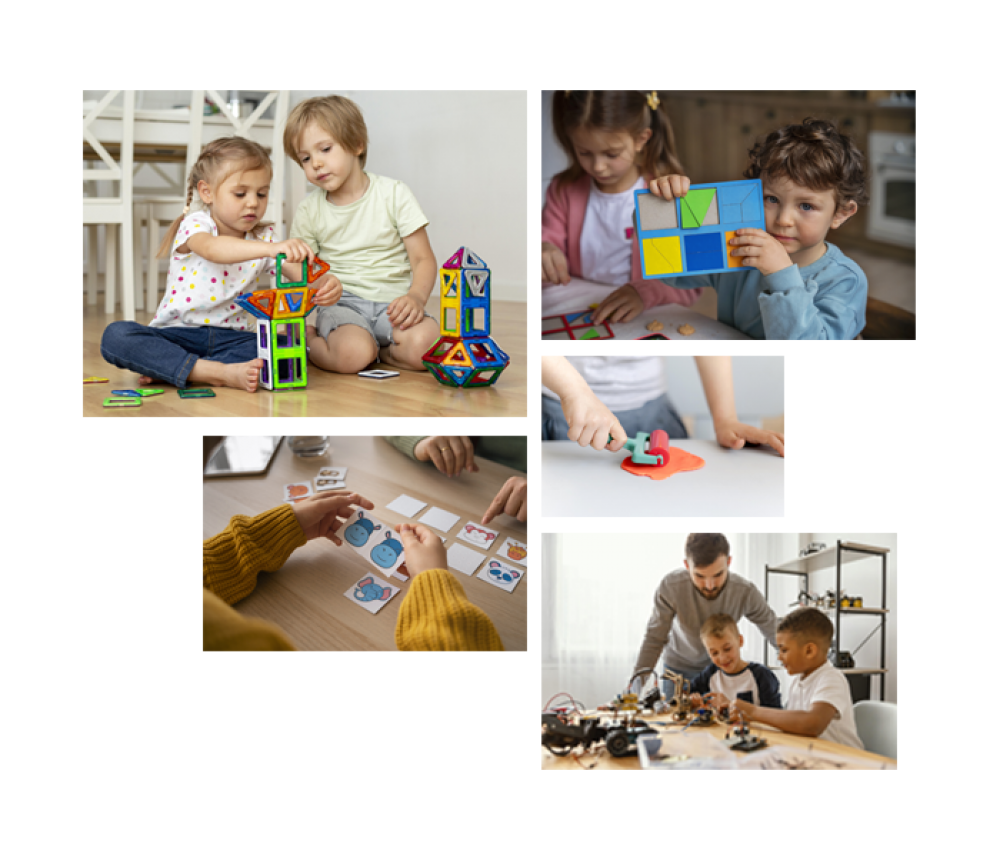
Eğlenirken Öğreten 5 Oyuncak Türü
Çocuklar oyun sırasında hem eğlenir hem de farkında olmadan öğrenirler. Doğru oyuncak seçimiyle bu öğrenme süreci daha da zenginleşir. İşte eğlendirirken geliştiren 5 oyuncak türü:
1.
Yapbozlar:
Parçaları birleştirirken problem çözme, sabır ve dikkat becerileri gelişir.
2.
Bloklar ve İnşa Setleri:
Hayal gücünü, el-göz koordinasyonunu ve motor becerileri destekler.
3.
Oyun Hamurları:
Şekil verme ve tasarım yaparken yaratıcılık, ince motor kasları ve odaklanma
yetenekleri güçlenir.
4.
Eğitici Kartlar ve Kitaplar:
Okuma sevgisi, kavram gelişimi ve dil becerileri kazandırır.
5.
Kumandalı Oyuncaklar:
Yönlendirme ve kontrol becerileriyle birlikte el becerilerini ve stratejik
düşünmeyi destekler.
Doğru
seçilen oyuncaklar, çocukların hem eğlenip hem de öğrenmesine katkı sağlar.
Oyun dolu öğrenme saatleri için bu tür oyuncaklara mutlaka yer açın!

Ekran Süresini Azaltmak İçin Etkili Oyuncak Seçimleri
Çocukların ekran başında geçirdiği zamanı azaltmak, günümüz ebeveynlerinin en büyük hedeflerinden biri. Bunu başarmanın en keyifli yollarından biri de dikkat çekici, eğitici ve uzun süreli oyun imkânı sunan oyuncaklar seçmektir.
Bloklar,
yapbozlar, oyun hamurları, hikâye figürleri gibi oyuncaklar; çocukların hayal
gücünü harekete geçirir, onları aktif düşünmeye ve üretmeye yönlendirir. Bu tür
oyuncaklar sayesinde çocuklar dijital dünyadan uzaklaşıp kendi oyunlarını
kurmaya başlar.
Oyunla
geçen kaliteli zaman, sadece ekran süresini azaltmaz; aynı zamanda çocukların
zihinsel, duygusal ve sosyal gelişimini de destekler.
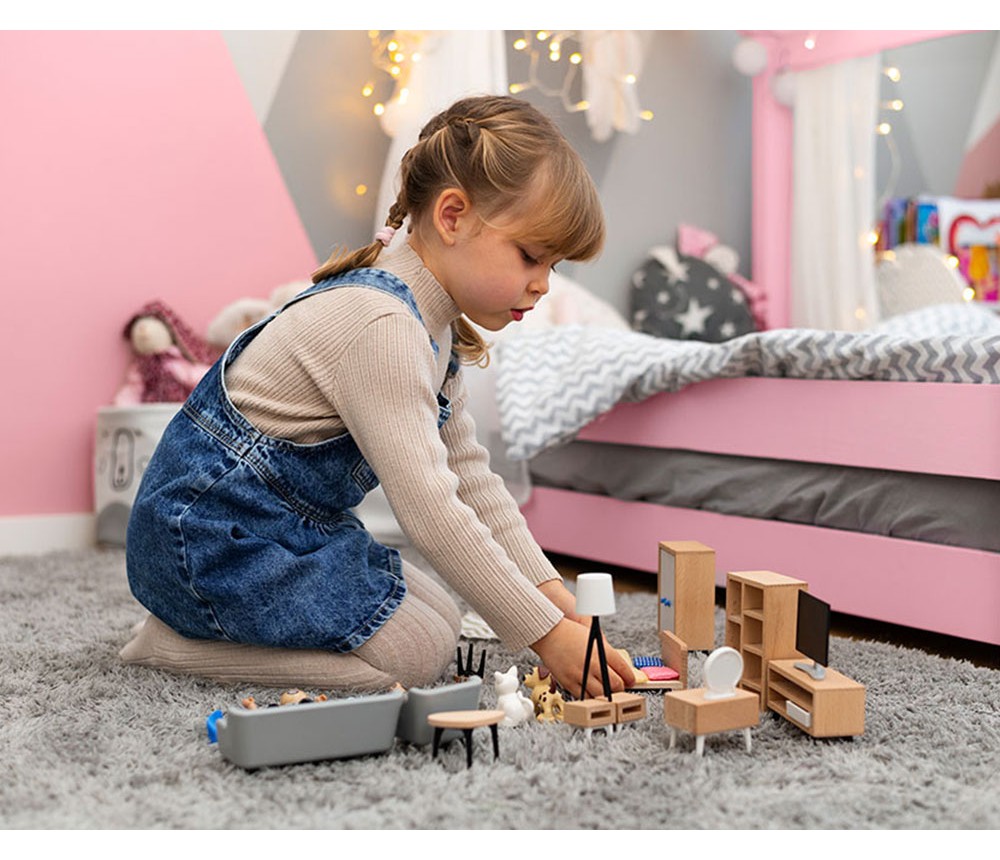
Çocuklar ve Oyuncaklar
Çocuklar için oyuncak, eğlenceden çok daha fazlasıdır. Oyuncaklar, çocukların fiziksel, zihinsel ve sosyal gelişimlerine katkıda bulunur. Oyun oynayarak çocuklar, motor becerilerini geliştirir, problem çözmeyi öğrenir, yaratıcılıklarını geliştirir ve sosyalleşirler.
Oyuncaklarla oynarken çocuklar, farklı karakterlere bürünebilir, farklı hikayeler yaratabilir ve kendi dünyalarını inşa edebilirler. Bu, çocukların hayal güçlerini ve yaratıcılıklarını geliştirmeye yardımcı olur.
Oyuncaklar, çocukların fiziksel gelişimlerine de katkıda bulunur. Oyuncaklarla oynarken çocuklar, koşar, zıplar, atlar ve eğlenirler. Bu, çocukların kaslarını güçlendirir ve koordinasyonlarını geliştirir.
Çocuklar için oyuncak seçerken, aşağıdaki noktalara dikkat etmek gerekir:
Oyuncak, çocuğun yaşına uygun olmalıdır.
Oyuncak, çocuğun ilgi alanlarına uygun olmalıdır.
Oyuncak, çocuğun gelişim düzeyine uygun olmalıdır.
Oyuncak, güvenli olmalıdır.
Oyuncak, kaliteli olmalıdır.
Çocuklar için oyuncak seçerken, bu noktalara dikkat ederek, çocuğunuzun sağlıklı ve mutlu bir şekilde gelişmesine yardımcı olabilirsiniz.
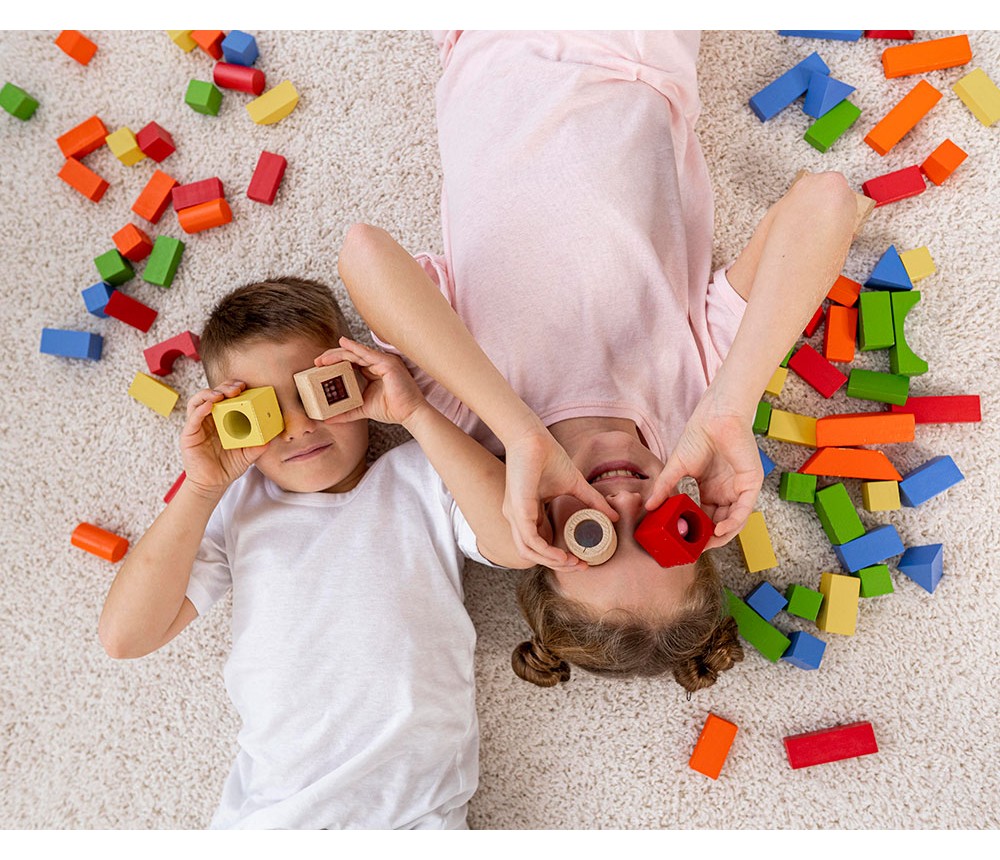
Oyuncakların Çocuk Gelişimindeki Etkisi
Çocuklar için oyuncaklar, sadece eğlenmek ve oynamak için kullanılan araçlar değil aynı zamanda gelişim süreçlerinde önemli bir role sahiptir. Oyuncaklar, çocukların fiziksel, zihinsel, sosyal ve duygusal becerilerini geliştirmelerine yardımcı olur. İşte oyuncakların çocuk gelişimindeki etkileri:
Motor Becerileri Gelişimi:
Oyuncaklar, çocukların motor becerilerini geliştirmelerine yardımcı olur. Özellikle manipülatif oyuncaklar (bloklar, yapbozlar, legolar) el-göz koordinasyonunu ve ince motor becerilerini güçlendirir. Çocuklar, oyuncakları ile etkileşim kurarak parmak kaslarını ve hareket kabiliyetlerini geliştirirler.
Duygusal Gelişim:
Oyuncaklar, çocukların duygusal gelişimine katkıda bulunur. Bebekler için yumuşak peluş oyuncaklar, onlara güven ve güvenlik hissi verir. Oyun oynamak, çocukların duygusal ifade yeteneklerini ve empati duygusunu geliştirmelerine yardımcı olur.
Zihinsel Gelişim:
Oyuncaklar, çocukların zihinsel becerilerini geliştirmelerine katkıda bulunur. Bulmacalar, matematiksel oyunlar ve yapbozlar, çocukların problem çözme becerilerini artırır. Eğitici oyuncaklar ve kitaplar, çocukların öğrenme isteklerini ve bilgiyi edinme kabiliyetlerini teşvik eder.
Dil Gelişimi:
Oyuncaklar, çocukların dil becerilerini geliştirmelerine yardımcı olur. Bebekler ve küçük çocuklar için konuşan ve müzikal oyuncaklar, kelime dağarcığının gelişmesine ve dilin daha iyi anlaşılmasına katkıda bulunur.
Sosyal Beceriler:
Oyuncaklar, çocukların sosyal becerilerini geliştirmelerine yardımcı olur. Oyun arkadaşlarıyla etkileşim kurarak, paylaşma, işbirliği yapma ve empati gösterme gibi sosyal beceriler geliştirilir.
Hayal Gücü ve Yaratıcılık:
Oyuncaklar, çocukların hayal gücünü ve yaratıcılığını teşvik eder. Basit oyuncaklar bile çocukların farklı senaryolar oluşturmasına ve kendi hikayelerini yaratmasına olanak tanır.
Oyuncaklar, çocukların gelişim süreçlerinde büyük bir rol oynamaktadır. Ebeveynlerin, çocukları için uygun oyuncakları seçmeleri ve onlarla etkileşim kurmaları önemlidir. Doğru oyuncaklarla çocuklar, keyifli ve eğitici bir şekilde gelişir ve öğrenirler.
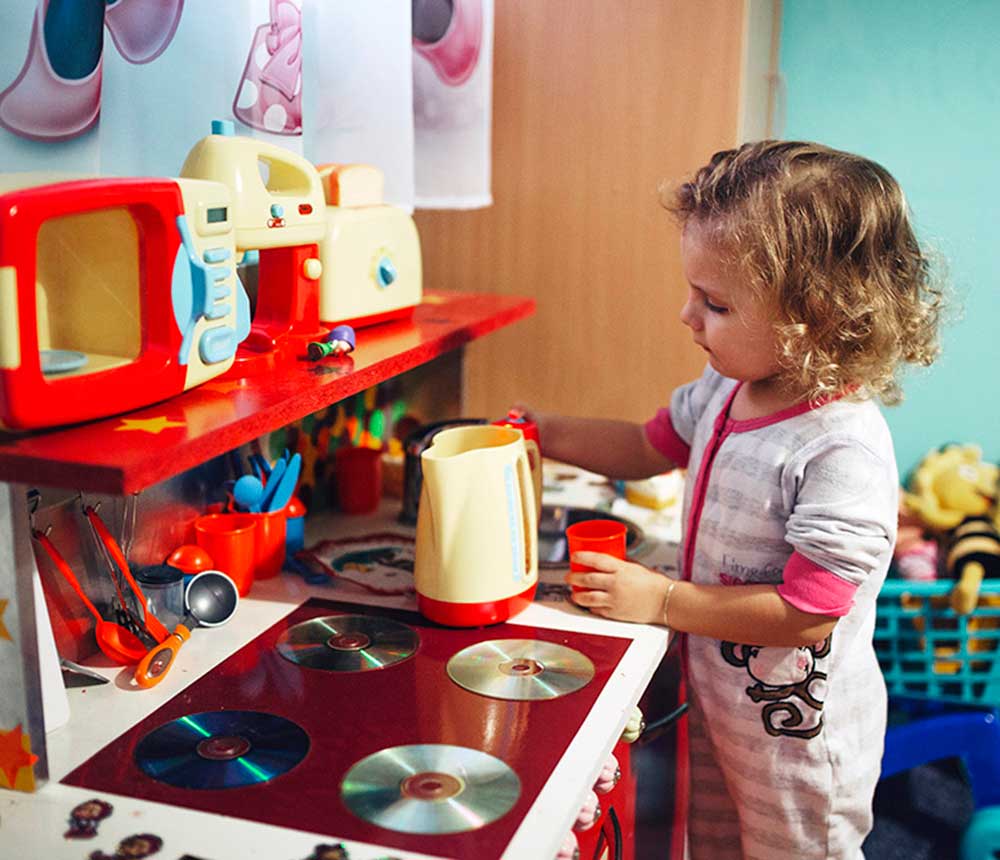
Oyuncak Mutfakların Çocuklar İçin Faydaları Nelerdir?
Çocuklar, yaratıcı oyunlarda farklı roller ve senaryolar katarak oynamayı severler. Oyun mutfakları, çocuklara aşina oldukları durumları taklit etme fırsatı verdiği için özellikle rol yapma oyunu için popüler bir kaynaktır. Evde baş aşçı, garson, mutfak görevlisi veya ebeveyn rolünü oynamayı çok seven çocuklar, oyun mutfakları ile kendilerini yeni rollerde hayal ederek ve heyecan verici senaryolar hazırlamalarına izin verir.
Mutfak oyuncakları ile oynamak sadece çocuklar için eğlenceli bir aktivite değildir, aynı zamanda bir çocuğun gelişimine de fayda sağlayan bir aktivitedir. Küçük çocuklar oyun yoluyla öğrenirler ve her zaman keşfedip deneyler yaparlar. Bu nedenle, oyun mutfaklarının çocuklara sağladığı temel faydaların bir listesini aşağıda bulabilirsiniz.
Oyun Mutfaklarının ve Mutfak Oyuncaklarının Çocuklar İçin Faydaları
Yaratıcılık ve Hayal Gücü
Mutfak oyuncakları ile rol oyunları oynamak çocukların hayal gücünü genişleten ve yaratıcılıklarını zenginleştiren heyecan verici ve eğlenceli bir aktivitedir. Çocuklara kendi yaratıcı tariflerini oluşturma ve farklı taklit malzemeleri keşfetme şansı verir.
Gördükleri yetişkinlerin eylemlerini taklit ederek ya da kullandıkları nesneler için kendi kullanımlarını formüle ederek, hayali senaryolar yaratmak için çeşitli mutfak oyuncaklarını denemekten zevk alırlar.
Dil ve İletişim
Rol yapma, çocuklara kendilerini yaratıcı bir şekilde ifade etme ve hikaye anlatma ile meşgul olma fırsatı verir. Çocuklar oynadıkları rolü sesli olarak canlandırarak dil gelişimlerini ve iletişimlerini geliştirir.
Mutfak oyuncakları ve mutfak oyunları, bir çocuğun yeni nesnelerin ve yiyeceklerin adlarını öğrenmesine sebep olur. Aynı zamanda “pişirmek” ve “karıştırmak” gibi yeni fiilleri ve “sıcak” ve “soğuk” gibi karşıt kelimeleri kullanırken çocuğun kelime hazinesi de genişler.
Sosyal Beceriler ve Takım Çalışması
Oyun mutfakları ve mutfak oyuncakları küçükleri diğer çocuklarla oynamaya teşvik ederek sosyal gelişimlerini arttırır. Kimin hangi rolü oynayacağı, neyi pişirmeleri gerektiği ve bunu nasıl yapacakları konusunda tartışmalar yaratırlar.
Bu sayede bu durum çocukları bir ekip olarak çalışmaya ve işi daha hızlı yapabilmeleri için işbirliği yapmaya teşvik eder. Onları paylaşmaya, sırayla yapmaya ve başkalarının ne pişirecekleri hakkındaki fikirlerini dinlemeye teşvik eder.
Planlama ve Organizasyon
Çocuklar tipik olarak oyuncak mutfaklarını ve mutfak oyuncaklarını düzenleme sürecinden zevk alırlar. Farklı rolleri belirleme ve farklı yiyecek türlerini bölümler halinde düzenleme onlara oldukça keyif verecek ve çokça zaman harcayacaklardır.
Oyun mutfağı organize edilirse, mutfak oyununun daha eğlenceli bir aktivite haline geldiğini keşfetme eğiliminde olacaklardır. Çocuklar oyuncak mutfak malzemelerini dolaplarda saklayabilir ve konukları için tabak ve çatal-bıçak takımlarını düzgün bir şekilde düzenleyebilir. Bu sırada ne yapacaklarını ve kimin hangi yemeği yapacağını planlarken organizasyon yeteneklerini de geliştireceklerdir.
Yaşam Becerileri
Çocuklar mutfak rol oyununa başladıklarında gerçek hayattaki meslekleri ve aşina oldukları durumları canlandırırlar. Bu, çocuklara dünyayı anlamalarını zenginleştiren ve yaşam becerilerini geliştiren temel yemek pişirme ve temizlik kavramlarını öğretir.
Masayı kuruyor, bulaşıkları yıkıyor ya da kek pişiriyormuş gibi yapıyor olsalar da, mutfakta rol yapma oyunu başkalarına karşı empatilerini artırma eğilimindedir çünkü bu onlara mutfakta yemek yapmanın ya da şef olarak çalışmanın nasıl bir şey olacağı konusunda bir fikir verir.
Bağımsızlık ve Kendine Güven
Çocuklara kendi oyuncak mutfağını sağlamanız, onlara bağımsızlık duygusu vererek özgüvenlerini artırır. Bu sayede çocuklar bir mutfakta çalışma rolünü tam olarak benimser ve onu temiz tutmaktan, eşyaları organize etmekten ve mutfaktaki farklı eşyaların bakımını yapmaktan sorumlu olurlar.
Çocuklar gerçek hayattaki mutfak rollerini üstlendiklerinde ve baş aşçılar gibi üstün roller oynadıklarında, aynı zamanda liderlik nitelikleri de geliştirmeye başlarlar.
Problem Çözme
Mutfak rol oyunları, bir çocuğun bilişsel yeteneğini ve problem çözme becerilerini geliştirir. Çatalın kaybolması gibi sorunlar ortaya çıkması, çocukları bir çözüm bulmaya zorlar. Çatalı başka bir şeyin yerine koymak veya kaybolan öğeyi bulmak için kendi çözümlerini üretmek zorunda olan çocukların problem çözme yetenekleri de gelişir.
Sayısallık
Oyuncak mutfaklar da bir çocuğun matematik becerilerini geliştirmeye yardımcı olur. Çocuklar kaç tabağa ihtiyaç duyduklarını sayabilir, malzemeleri tartabilir veya yiyeceğin fırında kaç dakika beklemesi gerektiğini sayabilir, bu da oyun oynarken matematiksel öğrenmelerini geliştirir.
Görsel Tanıma
Oyuncak mutfaklar, çocuklara yeni nesneler ve yiyecekler belirleme fırsatı verir. Oyuncak mutfaklarda çeşitli eşyalar bulundurabilirsiniz, bu da çocuklara farklı yiyecek türlerini ve mutfak eşyalarını kategorize etme şansı verir.
Sağlıklı Yemek Seçenekleri
Meyve, sebze, yumurta ve et gibi farklı türde oyuncak yiyecekleri rol oyunlarınıza katarak çocukları daha sağlıklı yiyecek seçimleri yapmaya teşvik edebilirsiniz. İştah açıcı senaryolarda pişirdikleri yemekleri hayal ederler, bu da onları gerçek hayatta da o yemeği sevmeye ve yemeye teşvik eder.
Motor Yetenekleri
Oyuncak mutfaklar aynı zamanda bir çocuğun ince motor becerilerini geliştirmeye yardımcı olur, çünkü mutfak eşyaları ve araçları oyun ortamlarında kullanarak çeşitli aktiviteler gerçekleştirirler.
Şimdi küçük önlükleri takma ve oyuncak mutfaklarda nefis yemekler yaratma zamanı!
Mutfak oyuncakları kategorimizi inceleyerek çocuğunuza uygun birçok mutfak oyuncağı ve oyuncak mutfak setlerini satın alabilirsiniz.

OYUNCAK SEÇİMİNDE SAĞLIK VE MARKA BİLİNCİ
Satışa sunulan oyuncakların ciddi bir kısmının gerekli güvenlik ve sağlık kriterlerine uymadığını dile getiren uzmanlar anne babaların doğru oyuncakları seçmek için eskiye nazaran daha bilinçli olduklarına dikkat çekiyor.
Oyuncak seçiminde sağlık ve güven birbirini tamamlayan iki önemli başlık. İkisinde dikkat etmek gerekiyor. Oyuncak alırken yanıcı, parlayıcı, kötü kokan ve zehirleme riski taşıyan malzemelerden yapılmış oyuncaklardan uzak durun. Oyuncakların ağır metal ve zararlı kimyasallar içermemesine özen gösterin. Çocukların oyuncakları ağız ve parmakla tanıma çabaları sık karşılaşılan bir durumdur. Çocuğunuzu, oyuncak parçalarının neden olduğu; yutma, nefes borusuna kaçma, parmak ve uzuv sıkışması gibi olumsuz durumlara karşı koruyun. Oyuncaklar; sert, kesici ve kırılabilen malzemelerden kaynaklanan yaralanmalara neden olabilirler. Bu durumla karşılaşmamak için oyuncakların güvenlik standartlarına uyup uymadıklarını kontrol edin.”
Pilli oyuncaklar tehlikeli olabilir
Oyuncak içindeki piller uzun süre bekleyince içindeki kimyasallar akma yapabilir. Çocuğunuzun pillerle temasa geçmemesi ve açık elektrik kablolarına ulaşmaması için oyuncaklardaki pil ve elektrik kabloları bağlantılarının gizlenmiş olmasına dikkat edin.
Oyuncakları çocuğunuzun yaşına göre seçin.
Çocuğunuzun yaş grubuna uygun olan oyuncakları seçin. Yaş gurubuna göre seçilen oyuncakların çocuğunuzun fiziksel, duygusal ve zihinsel gelişimini destekleyeceğini unutmayın. Ölme ve öldürme kavramlarını normalleştiren, oyuncak silah başta olmak üzere çocuklar üzerinde kötü etki bırakabilecek ve şiddet unsuru taşıyan tüm oyuncaklardan uzak durun.
Hafızayı güçlendiren oyun ve oyuncaklar ile çocuğunuzun zihinsel gelişimini destekleyin.
Çocuğunuzun seçici dikkat, odaklanma ve konsantrasyon, parça bütün ve şekil zemin ilişkisi becerilerini geliştiren eğitici oyuncaklar ile onun gelişimine katkı sağlayın.
Satın aldığınızın oyuncakların çocuğunuzun matematiksel, bağlantısal düşünme ve problem çözme becerilerini geliştirmesine özen gösterin. Doğru oyuncaklar ile oynayan çocuklarının zihinsel becerilerinin daha hızlı geliştirdiğini unutmayın.
Hafızayı geliştiren oyun ve oyuncaklar ile çocuğunuzun bilgiyi kopya etme, transfer etme ve uzun-kısa süreli hafıza becerisini geliştirin.
Grup halinde oynanan oyunlar ile çoğunuzun, yenme-yenilme kavramlarının yanı sıra birlikte hareket etme, paylaşma ve sosyal iletişim yeteneğini de geliştirin.
Müzikli oyuncakları ile onu hem eğlendirin hem de öğrenme becerisini geliştirin.
Oyuncaklarda müziğin eğiticiliğinden yararlanın. Müzikli oyuncaklar yardımıyla çocuğun uzun el becerisi geliştirin ve hayal gücünün sınırlarını keşfetmesine yardımcı olun. Eğitici oyuncaklar çocukların ruhsal, zihinsel, bedensel, gelişimine katkı sunmaktır. Bu bilinçle oyuncak seçin, AB oyuncak güvenliği ve çocuk sağlığı kriterlerine uygun olmayan oyun ve oyuncakları çocuklarınızdan uzak tutun.
KAYNAK: milliyet.com.tr
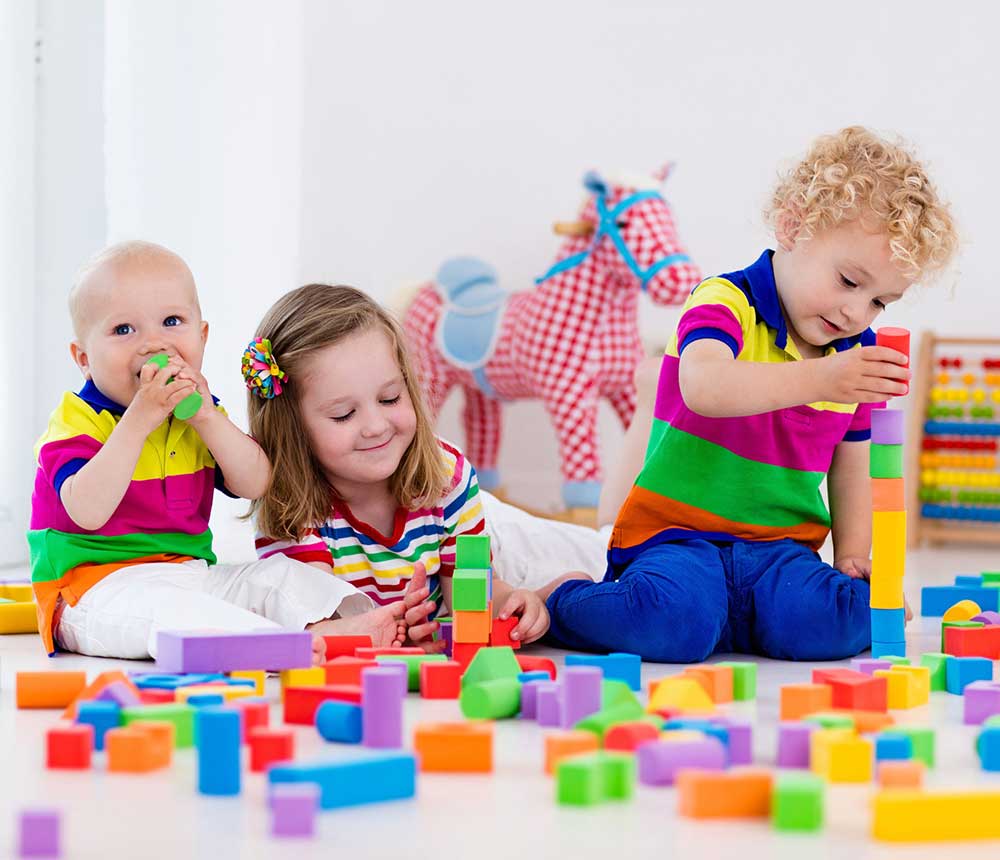
YAŞ GRUBUNA GÖRE OYUNCAK TAVSİYELERİ
ÇOCUKLARDA YAŞ GRUBUNA GÖRE OYUNCAK SEÇİMİ
Çocuk gelişimini desteklemek için oyuncaklar çok önemlidir. Bebeklerin ve çocukların yaşlarına göre doğru oyuncak seçini çok faydalı olur. Çok oyuncak almak yerine doğru zamanda doğru oyuncak daha yerinde olur.
Bazen çocuğunuzun hep aynı oyuncaklarla oynadığını veya sıkıldığını görebilirsiniz. Bu durumda evinizdeki oyuncakları dönüşümlü olarak kullanın. Bir kısım oyuncağını bir haftalığına kaldırın, farklı oyuncaklarla oynasın. Sonra yukarıdakileri indirin, eskilerden bazılarını kaldırın. Bunu yaparken de çocuğunuza söylemeyi ihmal etmeyin.
1 AYLIK BEBEK OYUNCAKLARI:
- Çıngırak
- Renkli Top
- Dönenceler: Dönencenin müziğinin faydalarını, bebeğinize günün değişik zamanlarında ve farklı ayarlarda çalarak arttırın. Birlikte söyleyin ya da mırıldanın. Bunu yaptığınız zaman bebeğinizin daha fazla eşlik etmeye başladığını göreceksiniz. Dönenceye bebeğin görüş açısından bakmayı deneyin. Dönencenin ya da bebeğinizin pozisyonunu arada bir değiştirin, böylece bebeğiniz farklı şekillerde görecektir. En başından beri bebeğiniz sizin sesinizi dinleyecek ve tepki verecektir. Bu bağlantıyı dönence hakkındaki şeyleri göstermek için kullanın—renkler, hareket, sallanan karakterler.
- Yumuşak Top
- Projektörler: Sakinleşmek için idealdir. Bebeğinizin ağlamasını durdurmak ve sakinleşmek için kendini ayarlamayı öğrenmesine yardımcı olun. Sakin sesler, müzik ve görüntülerle birlikte projektör, bebeğin ne zaman sakinleşip uyuyacağını anlamasına yardımcı olur. Özellikle size ve bebeğe sakinleştirici gelen bir müzik bulana kadar ses ayarlarını inceleyin, ondan sonra kendinize birkaç dakika ayırın: bebeğiniz uykuya dalarken sakinleştirici sesleri dinlemek sizin için de huzurlu bir vakit olabilir. Gördün mü?
- Bebeğinizin odaklanmasına yardım etmek için hareketi ve ışıkları işaret edin.
- Araba
- Ayıcık
- Sesli Kitap
2 AYLIK BEBEK OYUNCAKLARI
Bebek Jimnastik Merkezleri/ Oyun Minderi/ Oyun Merkezi: Oyun minderi ve benzeri şeyler etki tepkiyi öğretir. Renkler ve parlak zıt desenler bebeğinizin görme duyusunu uyarmak için harika bir yoldur. Renkleri işaret edin ve hayvanların isimlerini söyleyin; bebeğiniz anlamlarını henüz anlamayacak olsa da, onun da odağını değiştirebileceğini öğrenecektir.
Bez Bebekler ve Kolay Kavranabilen Yumuşak Oyuncaklar: Peluş Hayvan ve Bebekler (uzun gövdeli, bir bebeğin avuçlayabileceği kalınlıkta, sallayınca ses çıkaran ya da halka şeklinde oyuncaklar). Renkler ve parlak zıt desenler bebeğinizin görme duyusunu uyarmak için harika bir yoldur. Renkleri işaret edin ve hayvanların isimlerini söyleyin; bebeğiniz anlamlarını henüz anlamayacak olsa da, onun da odağını değiştirebileceğini öğrenecektir.
Zilli çoraplar, Renkli çoraplar (bulunabilirse el çorapları)
Oyuncak Hayvanlar
Bir oyuncak ses çıkarıyorsa, bu fırsatı bebeğinizin işitme duyusunu uyarmak için kullanın. Bebeğinizin ellerini kendi elleriniz içine alın ve yavaşça müzikle birlikte çırpın. Neşeyle şarkıyı söylerken ya da sesleri taklit ederken bir yandan da anlamlı yüz ifadeleri yapın.
3 AYLIK BEBEK OYUNCAKLARI
Üçüncü ayda 1 ve 2. ayda kullanılan oyuncaklar kullanılabilir. Ek olarak ise;
- Çıngıraklar ve Renkli Diş Kaşıyıcılar: 1. Sallayın. Çıngırağı bebeğin eline yerleştirin ve nazikçe sallayın. Bu yaştaki bebekler yeni yeni kavrama üzerinde kontrol edinmeye başlarlar—bir şeyi isteyerek tutabilir ve bırakabilirler— bebeğiniz büyük ihtimalle çıngırağı tutma, sallama ve düşürme ile ilgilenecektir. Çıngıraklar el denetimi ve el göz uyumunu geliştirir. Bebeğe bedenin bittiği oyuncağın başladığı yeri öğretir. 2. Bunu duydun mu? Oyuncağı önde tutarak, sallayarak ve ona uzanmasını sağlayarak bebeğin koordinasyon yeteneklerini çalıştırmasına yardımcı olun. Çıngırağı bebeğin eline yerleştirin, sallayın ve konuşun, "Sesi duydun mu? Bunu sen yaptın!" Ödülü vurgulamak onun tekrar denemek istemesine yol açacaktır. 3. Bebeğin iki elle tutabileceği kadar büyük bir çıngırak seçiniz. Bebeğin eline yerleştirin; önce bir el ile tutacaktır, sonra diğeriyle ve bırakın. Bu hareket bir objeyi elden ele geçirme yeteneğini geliştirecektir.
- Kauçuk Gıcırtılı Oyuncak
- Siyah beyaz kırmızı renklerde ve üzerinde geometrik şekiller olan aktivite halısı
- Tekmeleyebileceği, ses çıkaran yastık ya da oyuncak
- Kontrast renklerde (siyah – beyaz – kırmızı gibi) hazırlanmış, geometrik şekillerden ya da şematik insan yüzünden oluşan kartonlar, küpler
- Bebeğinize dinletmek istediğiniz müzik cd’leri, beyaz seslerin (su şırıltısı, süpürge sesi, “şşş” sesi gibi) kaydedildiği cd’ler
- Farklı dokulara sahip oyuncaklar (kumaş, pamuk, cam, tahta vs.)
- Renkli Halkalar
4 AYLIK BEBEK OYUNCAKLARI
- Önceki aylardaki oyuncaklara devam edilebilir.
- Kumaş, yıkanabilir kitaplar: Dokunma deneyimi kazandırır; kitap sevgisini besler.
- Parlak renklerde, farklı doku ve şekillerde yumuşak bloklar: Renkler ve şekilleri tanımaya yardımcı olur
- Yumuşak top: El – göz uyumunu geliştirir
- Düşsel oyuna teşvik eden, avutucu nesneler
5 AYLIK BEBEK OYUNCAKLARI
- Benlik duygusunu geliştiren oyuncaklar: Ayna, bebek aynası
- Diş çıkarma halkaları: Rahatsız etlerini yatıştırır.
- Aktivite oyuncakları
- Müzikli ve ışıklı oyuncaklar
- Minik Küpler
- Peluş Oyuncaklar
6-9 AYLIK BEBEK OYUNCAKLARI
- Ponpon
- Bloklar: Boyut algısını güçlendirir, renk ve şekil tanımayı sağlar.
- Toplar: El göz uyumunu ve dengeyi sağlar.
- Tahta Kitaplar: Eğlenceli, sözcük dağarcığını çoğaltır.
- Kutulardaki Yaylı Kuklalar: Nesne kalıcılığını öğretir.
- Banyo yaparken oynayabileceği oyuncaklar
- Müzikli ve hareketli oyuncaklar
- Eliyle bastığında ses çıkaran oyuncaklar
- Kurulunca hareket eden, ses çıkaran oyuncaklar
- Kutudakileri boşaltır ve içindekileri çıkartabileceği malzemeler
- Çıngıraklar, ziller: Sallayarak ses çıkartır
- Taşıt Resimli Kitaplar
- Halkalar
- Plastik Bardak, Tabaklar
9-12 AYLIK BEBEK OYUNCAKLARI
- Kurabiye Canavarı Kutusu
- Kaplar: Nesne kalıcılığını öğretir.
- Üst üste yığılan oyuncaklar: Boyut algısını güçlendirir.
- Delikli herhangi bir şey: Nesne kalıcılığını öğretir.
- Banyo oyuncakları (duş, kepçe, kova): Ölçme ve tartmaya yardım eder, yeni ortamları keşfetmeye cesaretlendirir; güvenli özgür oyunla tanışır.
- Direksiyon, Basit Arabalar: Düşsel oyun sunar.
- Vurmalı oyuncaklar (Basit piyano, ksilofon)
- Yüz hatları belirgin oyuncak bebek, tavşan, köpek gibi oyuncaklar
1 YAŞ BEBEK OYUNCAKLARI
- Yeni yürümeye başlayanlar için oyuncaklar
- Oyuncak kamyon ya da yürüteç: Denge kurmayı sağlar ve yürümeyi pekiştirir
- Basit yapbozlar: Kas becerisini geliştirir, okuma öncesi beceriler kazandırır.
- Ayıcık halkaları: El becerisine yardım eder.
- Eşleme oyuncakları: Eşleme ile matematik becerisidir.
- Sıralama çantası: Sıralamayı teşvik eder, ilk matematik becerisidir.
- Şekil yerleştirici: Sıralama becerisine yardım eder, boyut algısını güçlen
- Üst üste yığılan halkalar: Sıralama becerisini kazandırır.
- İpinden çekilen tekerlekli oyuncaklar: Ayakta tutunarak gidilen tekerlekli oyuncaklar,
- Kutuya atılan basit geometrik şekiller
- Basit ve kısa çocuk şarkıları
- 18-24 AYLIK BEBEK OYUNCAKLARI
- Üst üste geçebilen halkalar
- Parmak kuklaları
- Oyuncak hayvan figürleri
- Su havuzu ve oyuncakları
- El-göz koordinasyonunu geliştiren oyuncaklar
- Binilebilen oyuncaklar
- Arabalar, kamyonlar, trenler ve diğer araçlar
- İnşaat oyun setleri
2-3 YAŞ ÇOCUK OYUNCAK SEÇİMİ
2-3 yaş çocuk ları çevrelerinde yaşadıkları günlük olayları dramatize etmeye başlarlar. Bu nedenle, bu dönemdeki çocuklar için en uygun oyuncaklar onların dramatik oyunlarında kullanabilecekleridir.
- Değişik boyutlardaki bebekler
- Çeşitli kuklalar
- Oda takımları
- Mutfak malzemeleri
- Marangozluk
- Temizlik malzemeleri (kürek, süpürge)
- Bahçe aletleri (çapa, tırmık, kürek)
- Hayvan seti
- Ulaşım seti (tren yolu, köprü, demiryolu)
- Doktor araç gereçleri
- Kum ve su ile ilgili araçlar: Yine bu dönemde kum ve su çocukların en çok sevdikleri oyun malzemeleridir ve çocuklar bu yaşlarda, kovaya kum doldurup boşaltmaktan, kumu su ile karıştırıp harç yapmaktan çok büyük zevk duyarlar.
3-4 YAŞ ÇOCUK OYUNCAK SEÇİMİ
Çocukların motor gelişimlerinin artması ve hareketlerinin daha da düzenlenmesiyle çocuklar inip çıkmaktan, üç tekerlekli bisiklete binmekten ve tırmanmaktan çok hoşlanırlar.
- Üç tekerlekli bisiklet
- Sallanan at
- Pedallı araba
- Tekerlekli bisiklet
- Yük arabası
- Salıncak seti
- Sökülüp takılabilen veya bozulup- yapılabilen oyuncaklarla,
- Küçükten büyüğe doğru dizilebilen küpler
- Bloklar
- İnşaat malzemeleri
4-6 YAŞ ÇOCUK OYUNCAK SEÇİMİ
4, 5 ve 6 yaş çocukları açık hava oyunlarının yanı sıra masa başı faaliyetlerinden de büyük zevk alırlar.
Boyama, kesme, yapıştırma, resim yapma, artık materyallerle şekiller yapma ve parçalı bilmeceleri birleştirmeyi çok severler. Bu dönemde çocukların algılama, hatırlama, parçalara ayırıp birleştirme, yanılma, düzeltme, yeni yorumlar ve çözümler getirme yetenekleri de gelişir.
Bloklar, kalemler, kağıtlar, boyalar, boya fırçaları, tutkal, makas, düğmeler, boncuklar ve ayrıca eşleştirmeli oyuncaklar, resimli dominolar, resimli tombalalar ve resimli küpler, yap-bozlar Çocukların masa başı etkinliklerinde en sevilen oyuncaklar arasındadır.
6 YAŞ ÇOCUK OYUNCAKLARI NELERDİR?
Hayali oyunların en dorukta olması nedeniyle evcilik, bakkalcılık, doktorculuk oyunları ve bu döneme uygun ve çocuklar tarafından en fazla tercih edilen oyun malzemeleri şunlardır: Bebekler, evcilik ve doktorculuk setleri
- Marangozluk aletleri
- Kuklalar
- Temizlik ve mutfak setleri
- Bahçe aletleri
- Hayvan setleri, dükkanlar
- İp, top, ip merdiven, kızak, kayak ve paten: Bu dönemde çocukların top oynamak, ip atlamak, tırmanmak, yüzmek gibi bedensel hareketlerden ve açık hava oyunlarından çok fazla hoşlanırlar. Çocuğun okula başlamasıyla oyun ilgilerinde de bazı değişiklikler görülür.
KAYNAK: cocukludunya.com
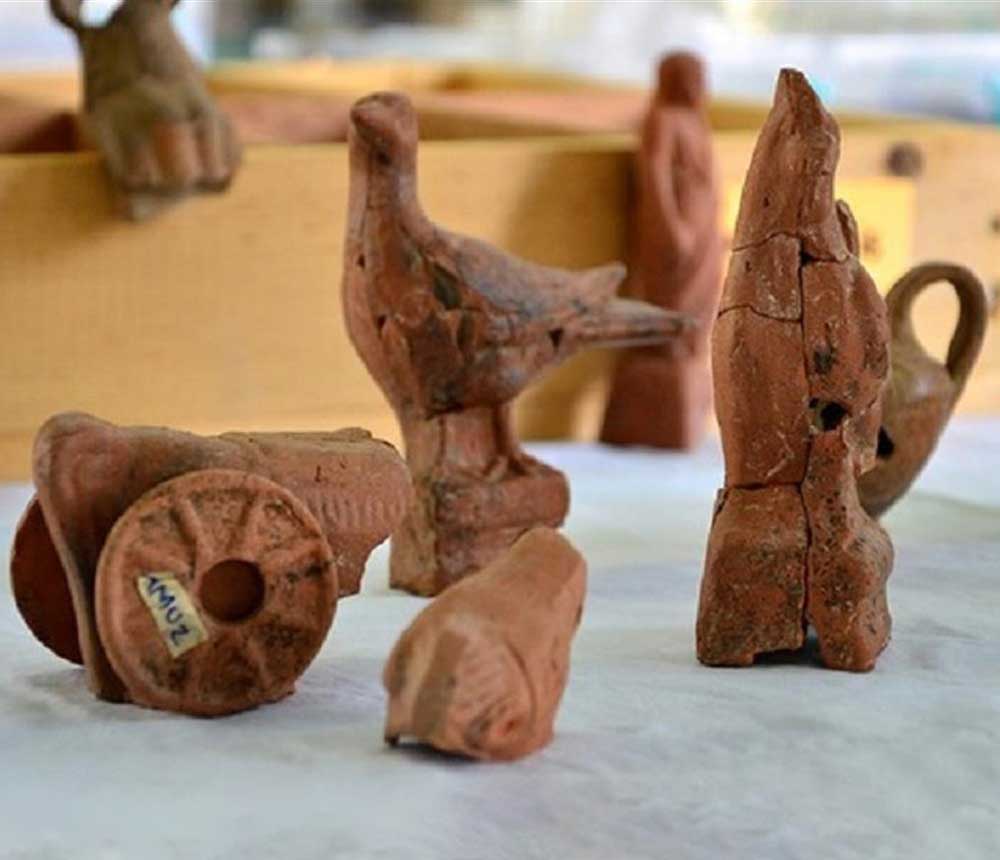
DÜNYA OYUNCAK TARİHİ
Oyuncak denilince kiminin aklına araba, kiminin aklına saçları güneş gibi parlayan bir bebek, kiminin aklına tahtadan bir at, kiminin ise bilgisayarlarda çeşitli konsüller aracılığı ile oynadığı mekanizmalar gelir.
Küçükten Büyüğe herkes oyun oynamaktan hoşlanır. Kimi saatlerce bilgisayarda takımını turnuvadan turnuvaya sürüklerken, kimi kendi boyundakilerle ip atlar, küçük tencere ve fincanlarla evcilik oynar.
Oyun ve Oyuncağın tarihi ise insanlığın varoluşu kadar eskilere dayanır. Tarihimizde bilinen ilk oyuncak Mısırlılara aittir. M.Ö. beşinci yüzyıl başlarında Mısırlı çocukların, şimdiki yaşıtları gibi Tahta Atlara binmekten çok hoşlandıkları belgelenmiştir. Bütün çağlarda olduğu gibi çocukların ( bizim dönemimizde de öyle idi ) en önemli oyuncakları arasında hayvanların özel bir yeri vardır.
Tahta Atlar ve benzer hayvanların seri üretimlerine ise Almanya tarafından 1700’lerde başlandığını söyleyebiliriz. Eski oyuncaklara ve oyuncak tarihine meraklı iseniz ve yolunuz Sonneberg / Almanya’dan geçecek olur ise, Alman Oyuncak Müzesinin sizi büyüleyeceğine eminim. Bulunan en eski ve Oyuncak Bebek devrinin başlangıç hikayesinin baş rolünde ise Alman Heinrich Schiliemann vardır. Yunan Kil sanatı ile yapıldığı tahmin edilen oyuncak bebeğe ” Çıngırak Kil Bebek ” adı takılmıştır. Bu bebek, kilden yapılmış olup hareketli kol ve bacaklara sahipti.
1800’lerin başlarında tahta eklemli, kalıpta işlenmiş bebekler yapılmaya başlandı ve bu bebeklere de Sonneberg Bebekleri ismi takıldı. On dokuzuncu yüzyılın başlarına kadar herhangi bir estetiği içermeyen bebekler, bu yüzyılın sonlarına doğru yuvalı eklemler, uyuyan gözler, süslü dekoratif elbiseler ve ses çıkartabilen bebekler olarak gelişmeye başladılar.
Oyuncakların gelişim ve beğenilme dengelerini masaya yatırdığımızda toplumların İlgi Değişimlerini de rahatlıkla izleyebiliriz. Örneğin; Ortaçağda çocuklar ağırlıkla şövalyeler, atlar, askerler ve bebekler ile oynarken, bugünlerde Astronotlar, Uçan Adam figürleri ve çeşitli silahlar ve değişik teknolojiler donatılmış olması da bir gösterge sayılabilir.
Ülkemizde ise oyuncak üretimi denildiği vakit ilk akla gelen Osmanlı Döneminin Eyüp Oyuncaklarıdır. Evliya Çelebi, seyahatnamesinde 100 dükkan ve 105 nefer olarak Oyuncakçı Esnafı betimlemiştir.
Osmanlı Dönemi oyuncakçılarından bahsetmişken, o dönem çocuklarının ise en çok severek oynadıkları oyuncakları arasında, Çember, Tahta Araba, Dönme Dolap, Düdük, Tef, Dümbelek, Fırıldak, Top, Topaç, Şakşak, Kaynana Zırıltısı ve Aynalı Beşikleri sayabiliriz. Almanya’daki oyuncak müzelerinden bahsetmişken, yurdumuzda da önemli oyuncak müzelerinden bahsetmeden olmaz. Bunlardan en önemlilerini İstanbul, Antalya, İzmir ve Ankarada gezebilirsiniz. Hadi kendinize bir iyilik yapın ve bu hafta sonu çocuklarınız veya arkadaşlarınız ile Geçmişe Bir Yolculuk yapıp, yakınlarınızdaki bir oyuncak müzesini ziyaret edin. Temin ediyorum haftanın stresini geçmişe ve çocukluğunuza giderek unutacaksınız.
Kaynak:
Vikipedia
Sonneberg Oyuncak Müzesi
Ankara Ünversitesi Oyuncak Müzesi
Oyuncak nedir ve nasıl tanımlanır? Oyuncakların ne gibi bir önemi ve işlevi vardır? Oyuncaklar hakkında genel bilgilerin yer aldığı yazımız.
OYUNCAK, ufak yaşta çocukların eğlenip oyalanmasına yarayan şeylerdir. Oyun gibi oyuncak da çocuğun ruhça gelişmesine büyük yardım eder.
Tarih öncesi çağlardan beri çocukların oyuncaklarla oynadığı sanılıyor. Mısır’da, İran’da yapılan kazılarda çeşitli oyuncaklar bulunmuş, eski Girit medeniyetinin kalıntılarında çok güzel bebeklere, oyuncak ev eşyasına rastlanmıştır.
Oyuncak, bir çocuğun hayalini genişletmesine yardım ettiği müddetçe hoşa gider. Küçük kızların çoğu bebekle, oyuncak ev eşyası ile oynayıp kendilerini annelerinin, daha başka büyüklerinin yerine koymaya çalışırlar. Bu oyuncaklarla oynarlarken hayallerini genişletebilirlerse oyun devam eder. Sonra öyle bir nokta gelir ki, oyuncak çocuğun hayalini artık besleyemez olur. O zaman çocuk bu oyuncakla oynamaktan bıkar, kendini oyalamak için başka bir çare aramaya koyulur.
Çocukların hayal kuvvetleri büyüklerinkinden çok daha geniş olduğu için bazan bir sopa bir çocuğu bir gün oyalayabilir. Küçük bir sopanın üzerine iliştirilmiş tahtadan oyma bir baş bir kız çocuğunun gözünde güzel bir kıraliçe, mesut bir ev kadını, herkesin beğendiği meşhur bir insan olabilir. Bu oyuncakla oynarken hayalini de daha fazla genişletir, çeşitli hikâyeler uydurur. Erkek çocuk için ise o sopa at, kılıç olur.
Birçok ülkelerde oyuncakların tarihi, İnsanlığın tarihi kadar eskidir. Eski Mısır’da çocuklar tahta bebeklerle, tahtadan yapılmış timsahlarla oynarlardı. Roma’lı çocuklar topa, arabaya, çembere meraklıydılar. Ortaçağ’ın çocukları babalarının zırhlı elbiselerini, miğferlerini hatırlatan kıyafetleri severler, ellerine tahtadan haçlar alıp askerlik oynarlardı. Ortaçağ’dan kalma oyuncakların hepsi usta ellerden çıkma eşyalardı.
Oyuncak çeşitlerinin artmasında yeni icatların da çok önemli payı olmuştur. Her yeni keşifle birlikte ortaya yeni bîr de oyuncak çıkmıştır. Meselâ oyuncak radyolar, oyuncak gemiler, oyuncak trenler, oyuncak füzeler, roketler XX. yüzyılın yenilikleridir.
Bugün bütün dünyada oyuncakçılık önemli bir sarayı haline gelmiştîr. Bu arada, Amerika’da Japonya’da oyuncakçılık çok ileridir. Yalnız, çocukların değil, büyüklerin bile zevkle oyalanabilecekleri oyuncaklar yapılmıştır. Daha eski devirlerde Avrupa dünya oyuncakçılığının merkeziydi. Fransızlar’ın süslü püslü bebekleri bütün dünyaca ünlüydü, Almanya’da Nürnberg şehri de oyuncak sanayiinin merkezi haline gelmişti.

Oyuncaklar İçin CE Belgesi Neden Önemlidir?
Oyuncaklar İçin CE Belgesi Neden Önemlidir?
CE belgesi, bir oyuncağın Avrupa Birliği güvenlik ve sağlık standartlarına uygun olduğunu gösterir. CE işareti taşıyan oyuncaklar, çocuklar için güvenli malzemelerden üretilir ve zararlı maddeler içermez. Oyuncak seçerken CE belgeli ürünleri tercih etmek, çocukların sağlığını ve güvenliğini korumak için çok önemlidir.